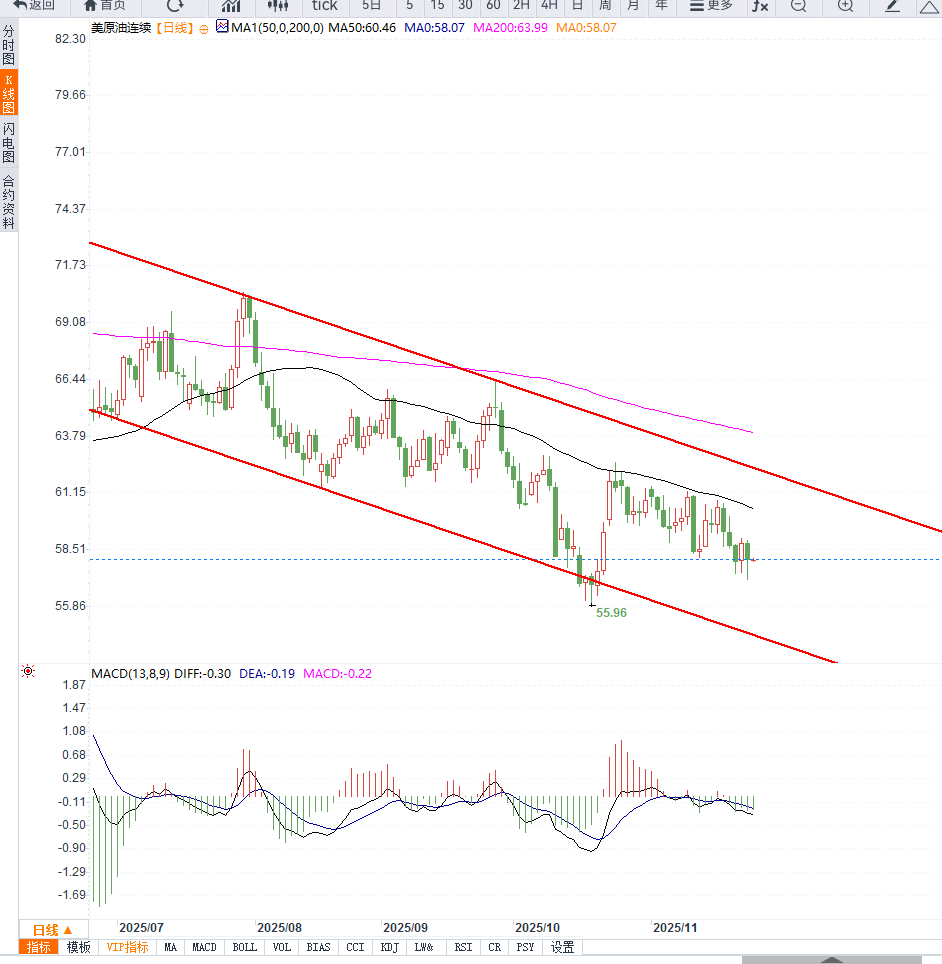Crude oil trading alert: Easing geopolitical tensions coupled with high inventory levels are putting downward pressure on international oil prices.
2025-11-26 10:01:23
At the same time, global crude oil inventory levels remain high, further limiting the potential for oil price rebounds.
Behind this market volatility lies a flurry of recent diplomatic activity. US President Trump stated that the Ukraine negotiations are now "remaining with only a few points of contention" and has dispatched senior representatives to hold separate consultations with both sides of the conflict, suggesting that the peace process may be reaching a crucial turning point.

If the relevant agreement is implemented, sanctions against Russian energy exports may be adjusted accordingly, thereby releasing more crude oil into the international market.
In the United States, the latest weekly report from the American Petroleum Institute (API) shows that as of last week, commercial crude oil inventories across the country decreased by 1.9 million barrels. Although the decline indicates some signs of destocking, the magnitude is limited.
The market is more focused on the official inventory data from the U.S. Energy Information Administration (EIA), which will be released tonight, to determine whether demand has truly recovered.
Energy consultancy Ritterbusch & Associates points out that the current market sell-off may be an "overreaction." Their analysts emphasize, "The real negotiation hurdles remain, with significant differences still existing on core issues, and a substantial agreement is still a long way off."
In other words, even if a peace framework begins to take shape, the possibility of Russian crude oil returning to the global market on a large scale in the short term remains limited.
From a technical perspective, the daily chart for US crude oil (WTI) shows a weak consolidation pattern. Prices have been consistently trading below the 50-day and 200-day moving averages recently, forming a "death cross" and continuing the downward trend, indicating a bearish medium-term trend.
WTI is currently fluctuating around $58, close to the previous low support area. If it breaks below this level, it may fall further to around $55. On the upside, the resistance level to watch is the $60 mark and the 5-day moving average.
The MACD indicator remains in negative territory, with the green bars slightly shortening but no obvious bullish divergence. The RSI hovers around 40, indicating that market sentiment remains cautious and lacks strong rebound momentum.
Overall, given the technical pattern and bearish fundamentals, oil prices may continue to fluctuate under pressure in the short term. Close attention should be paid to the holding of key support levels to determine the direction for the next stage.

Editor's Note:
Current oil price trends have shifted from a simple supply and demand logic to a high degree of sensitivity to geopolitical variables. If the situation in Ukraine is indeed close to an agreement, as Trump has stated, it will not only reshape the European security landscape but could also rapidly alter global energy flow patterns.
However, given the global economic slowdown and the accelerated penetration of alternative energy sources, even a large influx of Russian crude oil may not be fully absorbed by the market. In the short term, oil prices lack strong upward momentum, and the downside risks under the dual pressure of ample supply and weak macroeconomic conditions should be noted.
- Risk Warning and Disclaimer
- The market involves risk, and trading may not be suitable for all investors. This article is for reference only and does not constitute personal investment advice, nor does it take into account certain users’ specific investment objectives, financial situation, or other needs. Any investment decisions made based on this information are at your own risk.





















